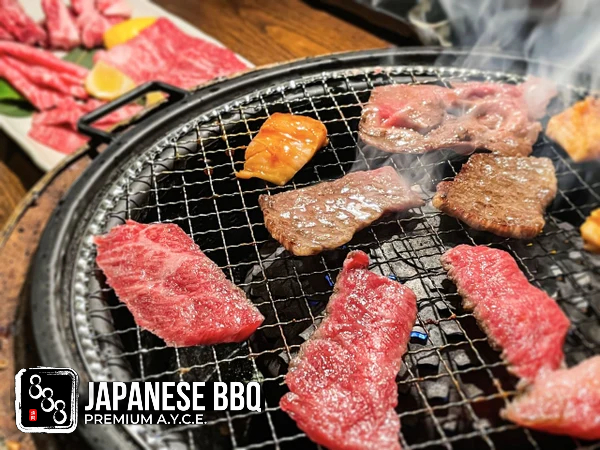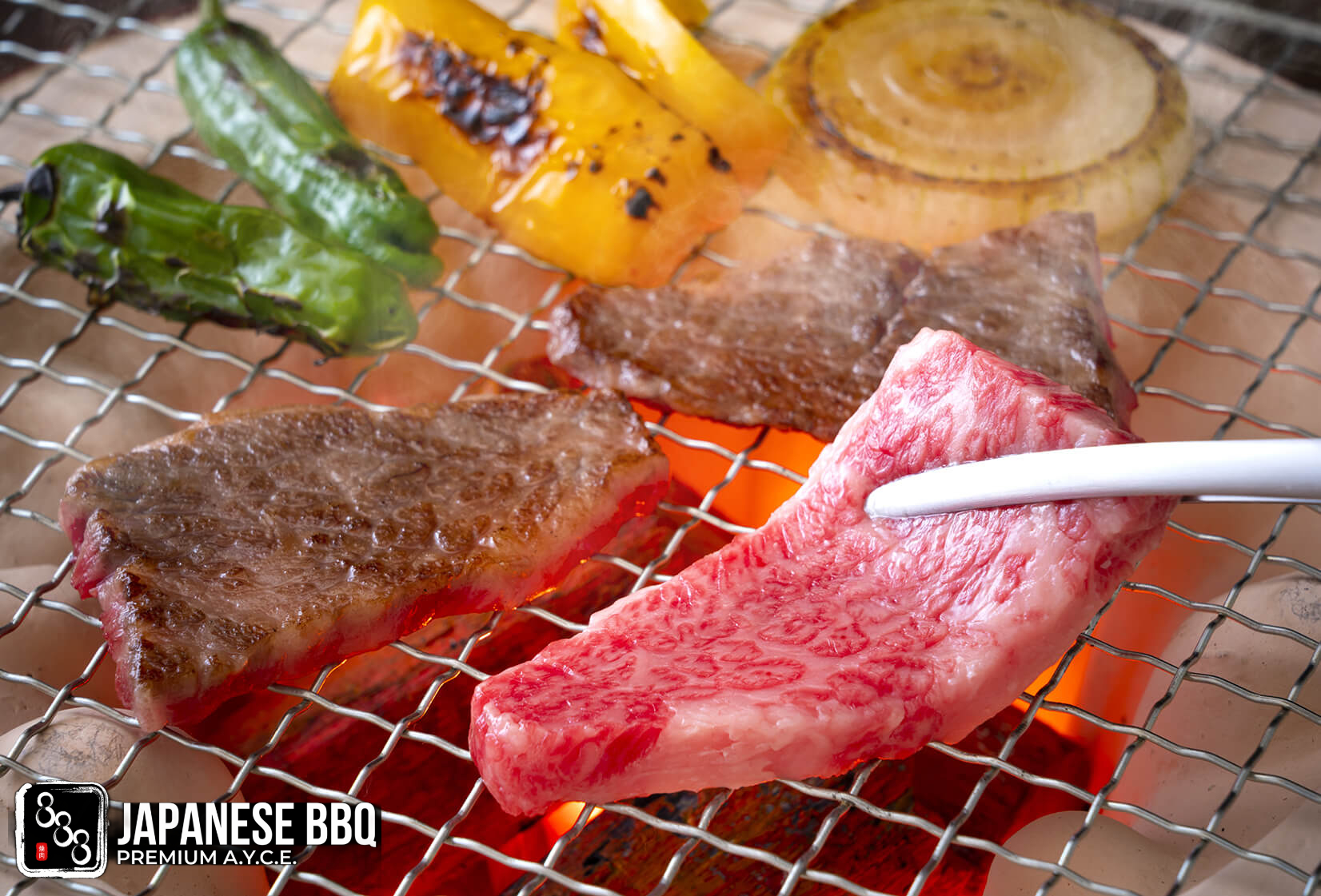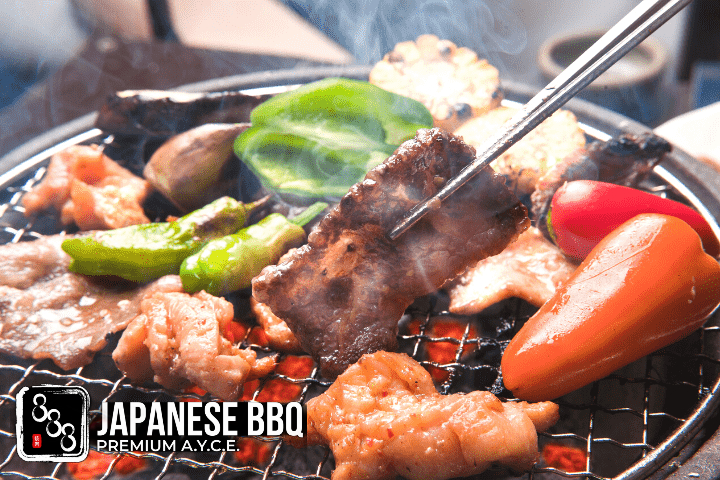What is Yakiniku: Discover the Delicious World of Grilled Japanese BBQ
Yakiniku, a popular Japanese cuisine, is loved by many for its delicious grilled meat dishes. The term "yakiniku" translates to "grilled meat" in English, and it encompasses a variety of tantalizing flavors and cooking styles. In this comprehensive guide, 888 Japanese BBQ will explore the origins of yakiniku, in response to the question "what is yakiniku", learn how to prepare it at home, discuss the different types of meat used, discover the art of eating yakiniku, address frequently asked questions, and more. Whether you are a seasoned yakiniku enthusiast or someone who is curious about trying it for the first time, this blog post will provide you with all the information you need to appreciate this delectable Japanese culinary experience.
What is Yakiniku?
Yakiniku is a Japanese style of barbecue where bite-sized pieces of meat, vegetables, and seafood are grilled over an open flame or charcoal grill. The meat is typically marinated in a savory sauce before being cooked, resulting in a flavorful and tender dish. Yakiniku can be enjoyed in various settings, from casual family gatherings to upscale restaurants specializing in this cuisine. It is often accompanied by side dishes such as rice, salad, kimchi, and pickled vegetables to create a well-rounded meal.

The History of Yakiniku
The origins of yakiniku can be traced back to the Korean peninsula during the early 20th century. Korean immigrants living in Japan brought their traditional method of grilling meat, known as bulgogi, which eventually evolved into the yakiniku we know today. Initially, yakiniku was primarily consumed by Korean residents in Japan, but its popularity quickly spread among the wider Japanese population.
Yakiniku gained significant traction in Japan during the post-World War II era when Western-style barbecue became increasingly popular. This led to the establishment of specialized yakiniku restaurants across the country, catering to a growing demand for grilled meat dishes. Over time, yakiniku developed its distinct Japanese flair, incorporating local ingredients, flavors, and cooking techniques.
How to Make Yakiniku
Preparing yakiniku at home can be a delightful culinary adventure that allows you to experiment with different cuts of meat, marinades, and grilling methods. Here are the basic steps to make yakiniku:
- Choose your meat: Yakiniku traditionally consists of beef, but you can also use chicken, pork, lamb, seafood, and even vegetables. Opt for tender cuts of meat, such as ribeye, sirloin, or short ribs, as they grill well and retain their juiciness.
- Prepare the marinade: Yakiniku marinades typically feature a combination of soy sauce, mirin (sweet rice wine), sake (Japanese rice wine), sugar, garlic, ginger, and sesame oil. Mix these ingredients together in a bowl until well combined. You can adjust the proportions according to your taste preferences.
- Marinate the meat: Place the meat in a shallow dish or resealable bag and pour the marinade over it. Ensure that the meat is evenly coated and let it marinate for at least 30 minutes, or preferably overnight in the refrigerator. This allows the flavors to penetrate the meat, resulting in enhanced taste and tenderness.
- Preheat the grill: If using a charcoal grill, light the charcoal and allow it to burn until it reaches a medium-high heat. For an indoor electric grill or stovetop grill pan, preheat it according to the manufacturer's instructions.
- Grill the meat: Remove the marinated meat from the refrigerator and let it come to room temperature. Place the meat on the hot grill and cook each side for 1-3 minutes, depending on the thickness and desired level of doneness. Avoid overcooking to maintain the meat's juiciness.
- Enjoy: Transfer the grilled meat to a serving platter and garnish with sliced green onions or sesame seeds, if desired. Serve immediately and savor the delicious flavors of your homemade yakiniku.

Yakiniku Sauce Recipe
The sauce is an essential component of yakiniku, adding depth and complexity to the grilled meat. While ready-made yakiniku sauces are readily available in stores, making your own sauce allows you to tailor it to your taste preferences. Here's a simple recipe for yakiniku sauce:
Ingredients:
- 1/2 cup soy sauce
- 1/4 cup mirin (sweet rice wine)
- 2 tablespoons sake (Japanese rice wine)
- 2 tablespoons sugar
- 2 cloves garlic, minced
- 1 tablespoon grated ginger
- 1 tablespoon sesame oil
Instructions:
- In a small saucepan, combine the soy sauce, mirin, sake, and sugar.
- Place the saucepan over medium heat and stir until the sugar has dissolved.
- Add the minced garlic, grated ginger, and sesame oil to the saucepan. Stir well to combine.
- Simmer the sauce for 5 minutes, allowing the flavors to meld together.
- Remove from heat and let the sauce cool before using. It can be stored in an airtight container in the refrigerator for up to one week.
Feel free to adjust the ingredients and proportions according to your personal taste. Some variations might include the addition of chili paste for a spicy kick or honey for a sweeter flavor profile. Experimentation is key when creating your ideal yakiniku sauce.
Read more: What Does Japanese BBQ Sauce Taste Like
Types of Meat Used for Yakiniku
Yakiniku boasts a wide range of meats that can be grilled to perfection. Each type of meat brings its unique flavors and textures to the table, offering a diverse culinary experience. Here are some popular choices for yakiniku:
- Beef: Beef is the most common meat used in yakiniku due to its rich flavor and tenderness. Different cuts of beef are available, each with its own characteristics. For example, ribeye (known as "karubi" in Japanese) is prized for its marbling, while short ribs ("kalbi") offer a delightful combination of meat and bone.
- Pork: Pork is another favorite choice for yakiniku, offering succulent and juicy bites. Pork belly ("butabara") is particularly popular, thanks to its fatty nature that adds a burst of flavor when grilled. Other pork cuts, such as loin, shoulder, and collar, are also commonly enjoyed.
- Chicken: Chicken yakiniku provides a lighter alternative to beef and pork. Tender chicken thighs or breast meat can be marinated and grilled to perfection. To add more variety, chicken wings, gizzards, or hearts can also be included for those who enjoy exploring different textures.
- Seafood: While yakiniku traditionally focuses on meat, seafood options have gained popularity in recent years. Scallops, shrimp, squid, and salmon are just some examples of seafood that grill well and complement the flavors of yakiniku. They add a delightful oceanic touch to the overall meal.
- Vegetables: Yakiniku isn't limited to meat alone. Various vegetables can be included in the grilling process, offering a refreshing balance to the richness of the meat. Popular vegetable choices include mushrooms (such as shiitake and enoki), bell peppers, zucchini, onions, and eggplant. Grilling these vegetables enhances their natural sweetness and adds depth to the overall flavor profile.
When selecting meat for yakiniku, it's important to consider the quality and freshness. Visit your local butcher or trusted meat supplier to ensure you are using the best ingredients. Additionally, marinating the meat beforehand helps tenderize it and infuse it with delicious flavors.

How to Eat Yakiniku
Eating yakiniku is not only about satisfying your taste buds but also about embracing the communal dining experience. Here are some tips on how to enjoy yakiniku to the fullest:
- Grilling: When grilling the meat, aim for a beautiful balance between rare and well-done pieces. This allows everyone to enjoy their preferred level of doneness. Remember to turn the meat using tongs or chopsticks to ensure even cooking.
- Condiments: Yakiniku is typically enjoyed with an array of condiments that enhance the flavors further. Some common accompaniments include sesame oil for dipping, chili paste for a spicy kick, and citrus-based sauces like ponzu for a refreshing touch. Experiment with different combinations to find your favorite flavor pairings.
- Wrap and roll: Another popular way to enjoy yakiniku is by wrapping the grilled meat in lettuce leaves or sesame leaf ("shiso") before taking a bite. This technique adds freshness and crunch to each mouthful. Be sure to top the wrap with some rice and condiments for an extra burst of flavor.
- Savor the sides: Yakiniku is often served with a variety of side dishes to complement the grilled meats. Rice, salad, kimchi, pickled vegetables, miso soup, and Japanese-style pancakes ("okonomiyaki") are typical accompaniments. Take small bites of these side dishes between meat servings to cleanse your palate and enjoy the full range of flavors.
- Share the experience: Yakiniku is traditionally enjoyed with family and friends, embracing the concept of shared meals. Take this opportunity to bond over the grill, share cooking responsibilities, and engage in lively conversations. The interactive nature of yakiniku lends itself well to creating memorable dining experiences.
Read more: What Does BBQ Stand For
FAQs
- Can I enjoy yakiniku if I don't eat meat? Absolutely! While yakiniku is primarily focused on grilled meat, many restaurants offer vegetarian options or meat substitutes such as tofu or seitan. Additionally, grilling various vegetables, mushrooms, and seafood can create a delightful vegetarian or pescatarian yakiniku experience.
- Are there any specific grilling techniques for yakiniku? Yakiniku can be grilled using various methods, including open flame grills, charcoal grills, electric grills, or stovetop grill pans. Each method offers slightly different results, but the key is to achieve a caramelized exterior while maintaining the meat's juiciness. Experiment with different heat intensities and cooking times until you find your preferred grilling technique.
- What is the difference between yakiniku and Korean barbecue (BBQ)? Although yakiniku and Korean BBQ share similarities, there are some notable differences. Yakiniku typically involves bite-sized pieces of meat that are quickly cooked on a grill, whereas Korean BBQ often features larger cuts of meat that are slow-cooked over a charcoal grill. Additionally, the marinades and seasoning used in yakiniku and Korean BBQ have distinct flavor profiles, reflecting the culinary traditions of each cuisine.
- Can I make yakiniku at home without a grill? While grilling is the traditional method for preparing yakiniku, it is possible to recreate the flavors indoors without a grill. Electric grill pans or stovetop grill plates can provide similar results. Alternatively, you can broil the marinated meat in the oven, ensuring it is cooked to your desired level of doneness.

Conclusion
Yakiniku offers a delightful journey into the world of grilled meat, bringing together flavors, textures, and communal dining experiences. From its humble beginnings as a Korean immigrant dish to its current status as a beloved Japanese favorite, yakiniku continues to captivate food enthusiasts worldwide. Whether you choose to indulge in the experience at a specialized restaurant or explore the art of making yakiniku at home, this guide has provided you with the necessary knowledge to appreciate this delicious cuisine. So gather your loved ones, fire up the grill, and embark on a sensational yakiniku adventure that will surely leave a lasting impression.
Follow 888 Japanese BBQ for more useful information.



